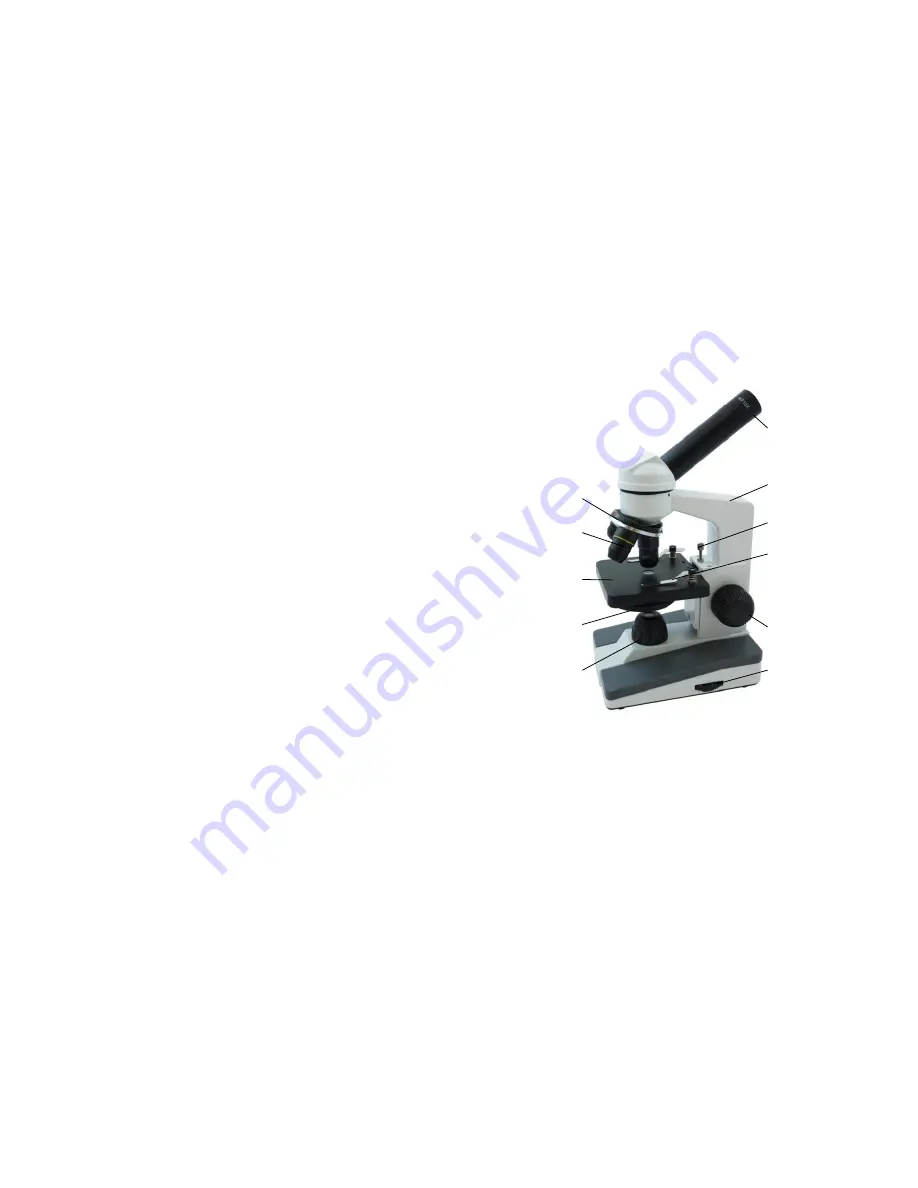
©
Home Training Tools Ltd. 2013 Page 2 of 8
Visit us at ww.homesciencetools.com
Welcome
to
an
exciting
world
of
discovery with your new Kids Microscope!
This manual will give you a familiarity with the
different features of your microscope, how to use
them, and how to preserve your investment by
proper maintenance and care.
There are two microscopes in the Kids
Microscope series. They share the same basic
features and functions, but you will find a
discussion of the power options for the MI-
1100LED model on page 3.
Table of Contents
Table of Contents ................................................. 2
General Microscope Care .................................... 2
Unpacking ......................................................... 2
Cleaning ........................................................... 2
Features & Definitions .......................................... 2
Microscope Diagram ......................................... 2
Description of Components .............................. 2
Power Options for MI-1100LED ....................... 3
Operating Procedure ............................................ 3
Maintenance ......................................................... 4
Adjusting the Stage Stop .................................. 4
Changing the Tungsten Bulb in the MI-1100STD ...... 4
Changing the LED Bulb in the MI-1100LED ..... 4
Warranty ............................................................... 4
Troubleshooting ................................................... 5
Specifications ....................................................... 5
Ideas for Using Your Microscope ......................... 6
Prepared Slides .................................................... 7
General Microscope Care
Unpacking
Your Kids Microscope is shipped in a two-
part Styrofoam case. Keep this case for storage,
transport, and shipping. It is perfect packing
material should you ever need to send your
microscope in for repairs covered by the warranty.
When handling your microscope, always pick
it up by the arm. Avoid touching the lens surfaces
on the eyepiece or objective lens, as finger prints
will decrease image quality.
Cleaning
The best optical quality can be compromised
by dirty lenses. Using a dustcover and cleaning
the lenses regularly will greatly enhance your
microscope use.
To clean lens surfaces, remove dust by using
a soft brush or a can of compressed air. Then
moisten a piece of lens paper (our item MI-
PAPER) with some lens cleaning solution (MI-
LENSCLN). Gently clean the eyepiece and
objective lens exterior surface using a circular
motion. Repeat with a second paper moistened
with solution if necessary. Repeat once again with
a piece of dry lens paper until the lens is clean
and dry.
Do not spray lens cleaner directly on
the lens.
Features & Definitions
Microscope Diagram
Description of Components
1.
Eyepiece:
This is the part of the microscope
that you look through. It is inclined at a 45º
angle for comfortable viewing. It contains a
lens that magnifies 10x.
2.
Arm:
The arm not only supports the head and
nosepiece,
it is also the best “handle” for
picking up and moving the microscope.
3.
Nosepiece:
This is also called the “objective
turret
.” It holds the objective lenses and
rotates 360º. You can change magnification
by turning it until the lens you want to use
“clicks” into place.
4.
Objective lenses:
These are the lenses
closest to the specimen. The standard
objectives are 4x, 10x, and 40x, which
multiply with the 10x eyepiece lens to provide
magnification levels of 40x, 100x, and 400x.
The shortest lens has the lowest magnification
Light intensity
control MI-1100LED
1. Eyepiece
2. Arm
3. Nosepiece
4. Objective
lenses
5. Stage
6. Stage stop
7. Stage clips
8. Disc diaphragm
9. Focus knob
10. Illuminator


























